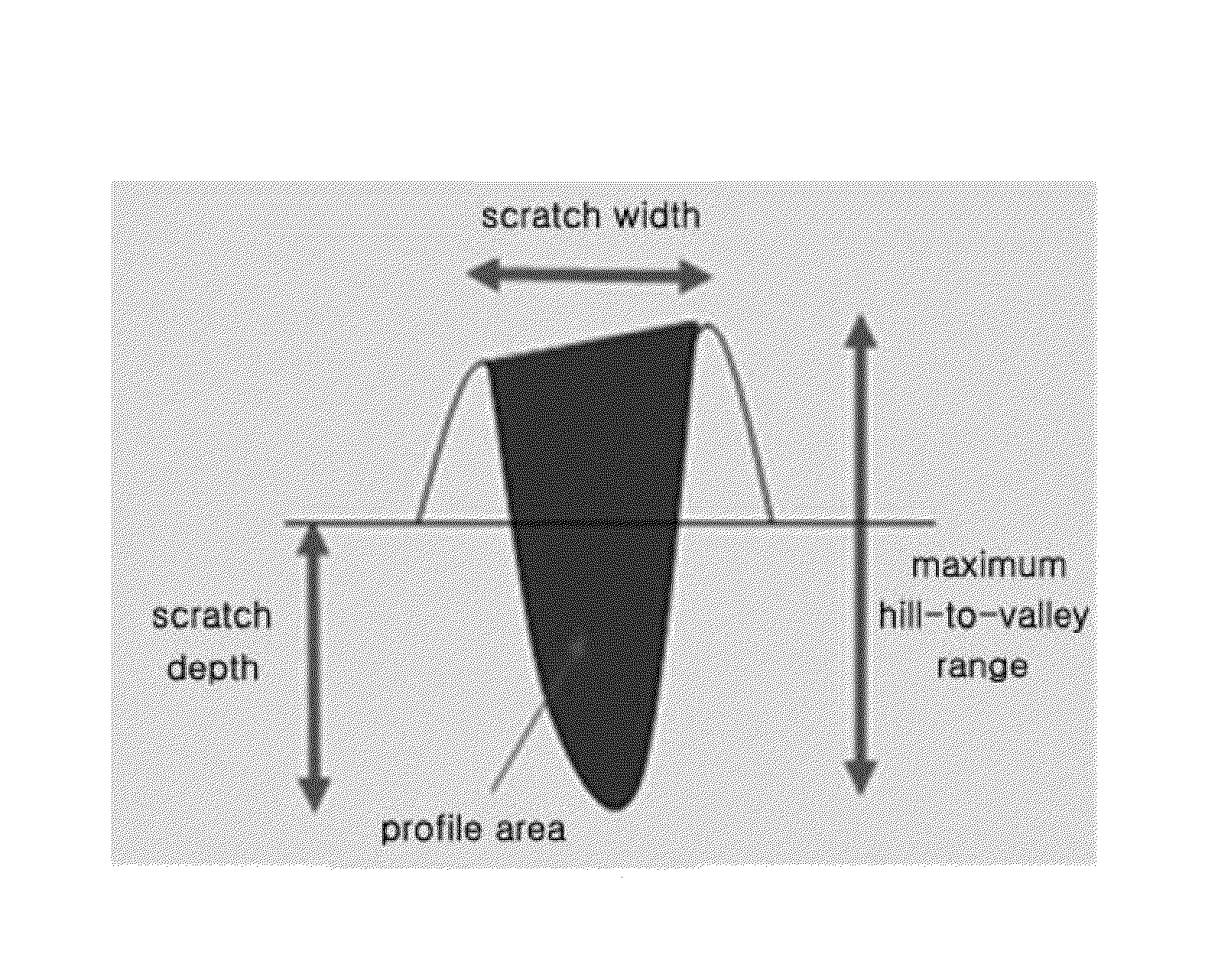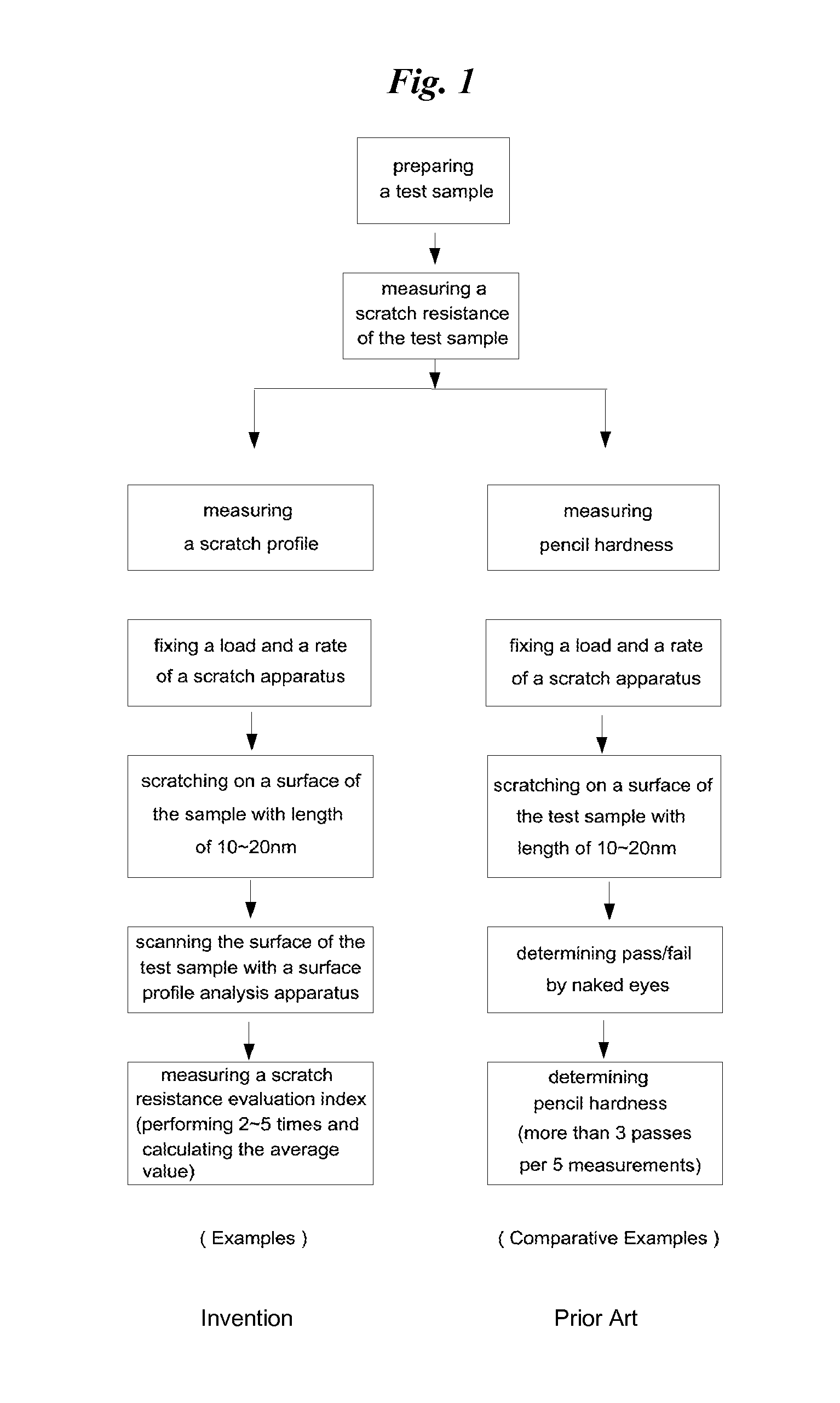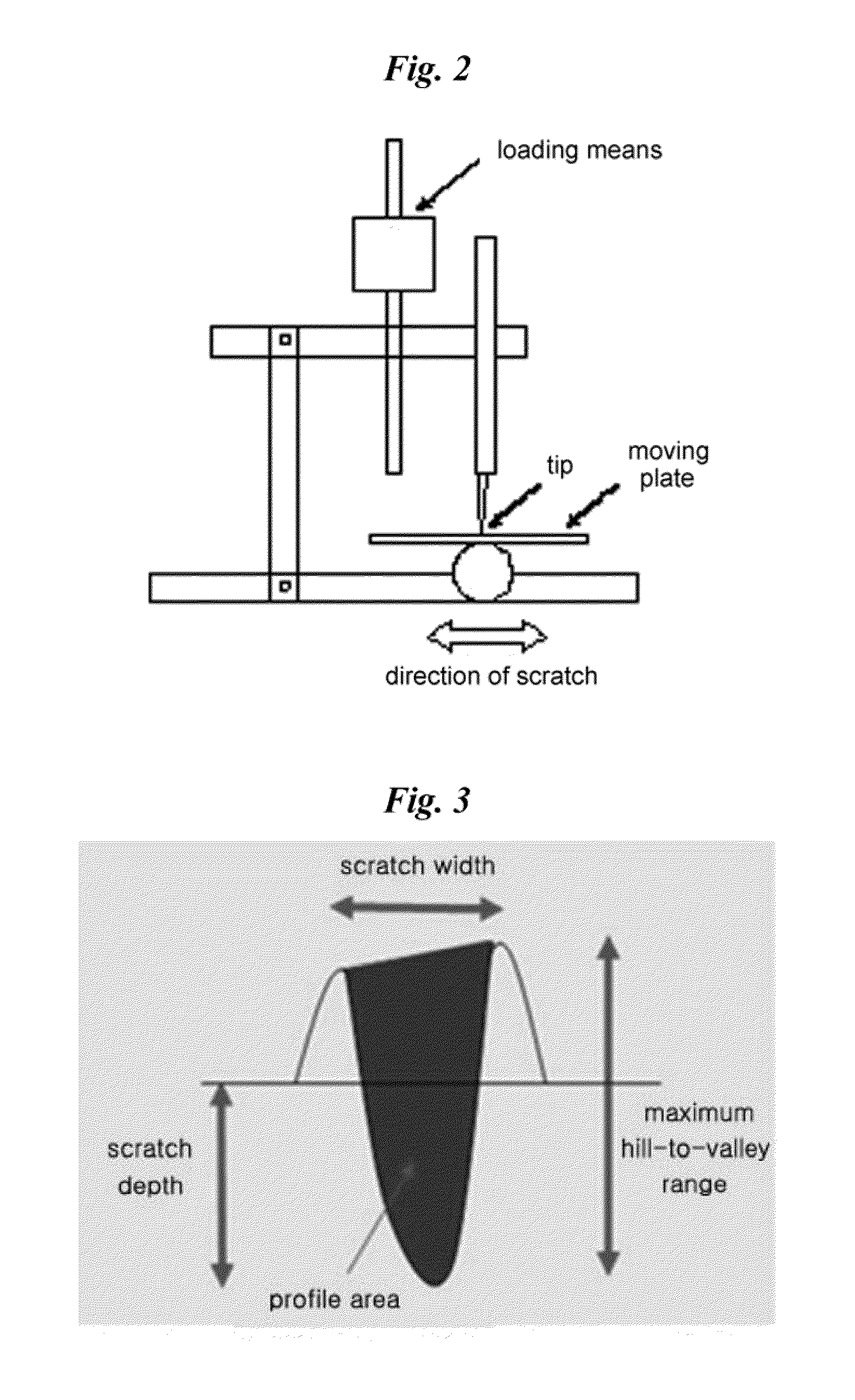Method for evaluating scratch resistance of plastic resins
a plastic resin and scratch resistance technology, applied in the field of plastic resin scratch resistance evaluation, can solve the problems of increasing processing time and manufacturing costs, poor scratch resistance of plastic resin surfaces, and raising environmental concerns, so as to reduce errors, improve scratch resistance, and improve the effect of surface scratch resistan
- Summary
- Abstract
- Description
- Claims
- Application Information
AI Technical Summary
Benefits of technology
Problems solved by technology
Method used
Image
Examples
examples
[0057]Products manufactured by different molding processes are used as test samples for evaluating scratch resistance. In particular, (A) a plastic injection-molded test sample, (B) a plastic film test sample and (C) a coating test sample are used.
[0058]Thermoplastic test samples (A1, A2, and A3), each prepared by injection-molding three different thermoplastic resins, are used as the plastic injection-molded test sample (A).
[0059]The three different thermoplastic resins are (A1) an acrylonitrile-butadiene-styrene (ABS) copolymer resin (trade name: SD-0150, produced by Cheil Industries, Inc.), (A2) a polycarbonate (PC) resin (trade name: Panlite L-1250WP, produced by Teijin Chemicals Ltd.) and (A3) a polymethylmethacrylate (PMMA) resin (trade name: TP-100, produced by Cheil industries, Inc.).
[0060]Each of the thermoplastic test samples (A1, A2) are divided into two colors: black (BL) and an original color (NU) of the thermoplastic resin. Color of the thermoplastic test sample (A3) i...
PUM
| Property | Measurement | Unit |
|---|---|---|
| diameter | aaaaa | aaaaa |
| length | aaaaa | aaaaa |
| length | aaaaa | aaaaa |
Abstract
Description
Claims
Application Information
 Login to View More
Login to View More - R&D
- Intellectual Property
- Life Sciences
- Materials
- Tech Scout
- Unparalleled Data Quality
- Higher Quality Content
- 60% Fewer Hallucinations
Browse by: Latest US Patents, China's latest patents, Technical Efficacy Thesaurus, Application Domain, Technology Topic, Popular Technical Reports.
© 2025 PatSnap. All rights reserved.Legal|Privacy policy|Modern Slavery Act Transparency Statement|Sitemap|About US| Contact US: help@patsnap.com



